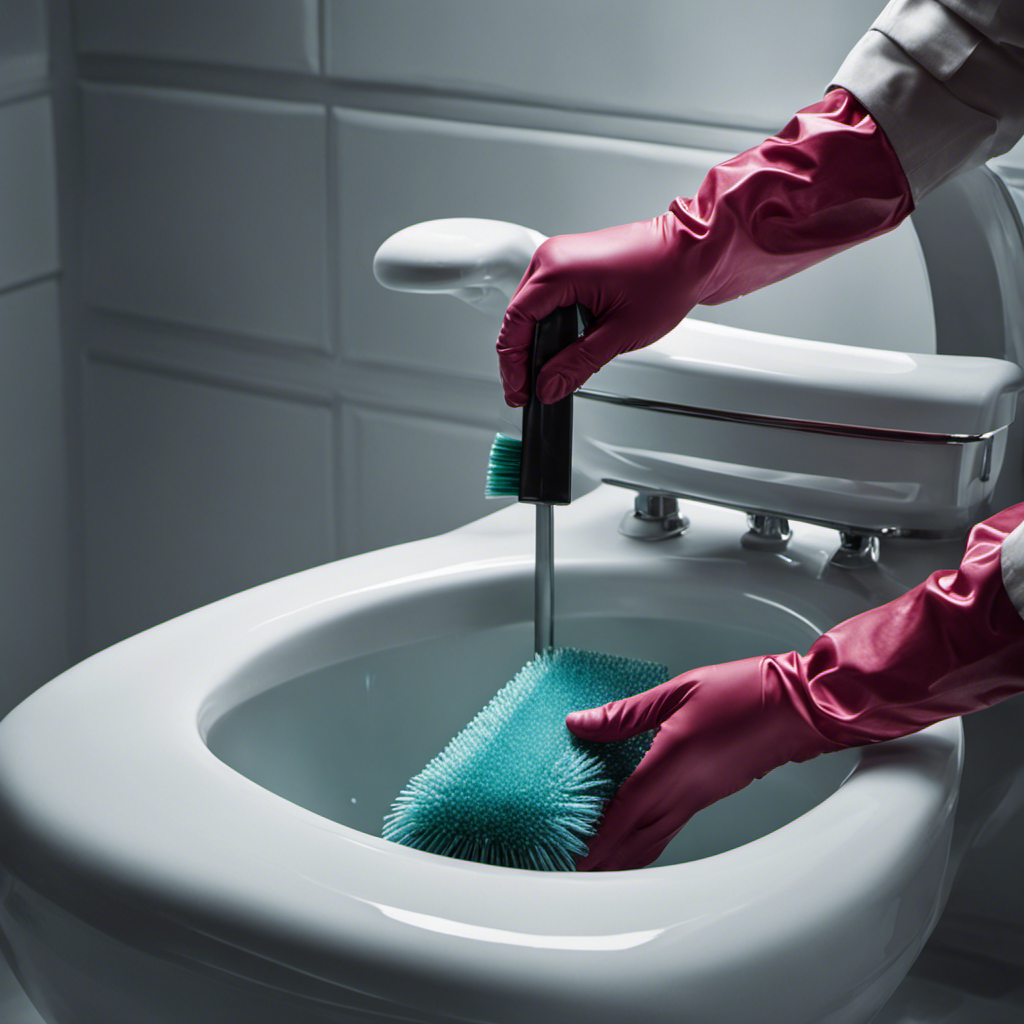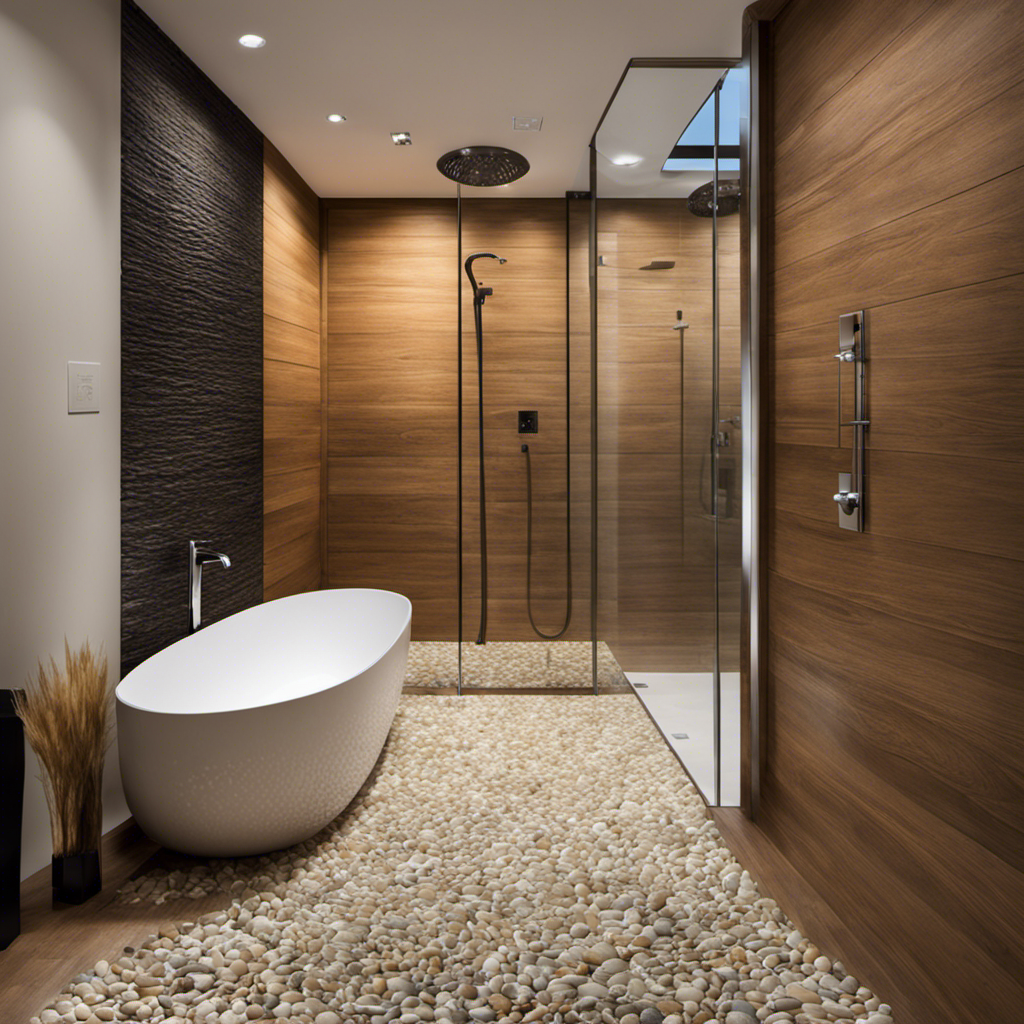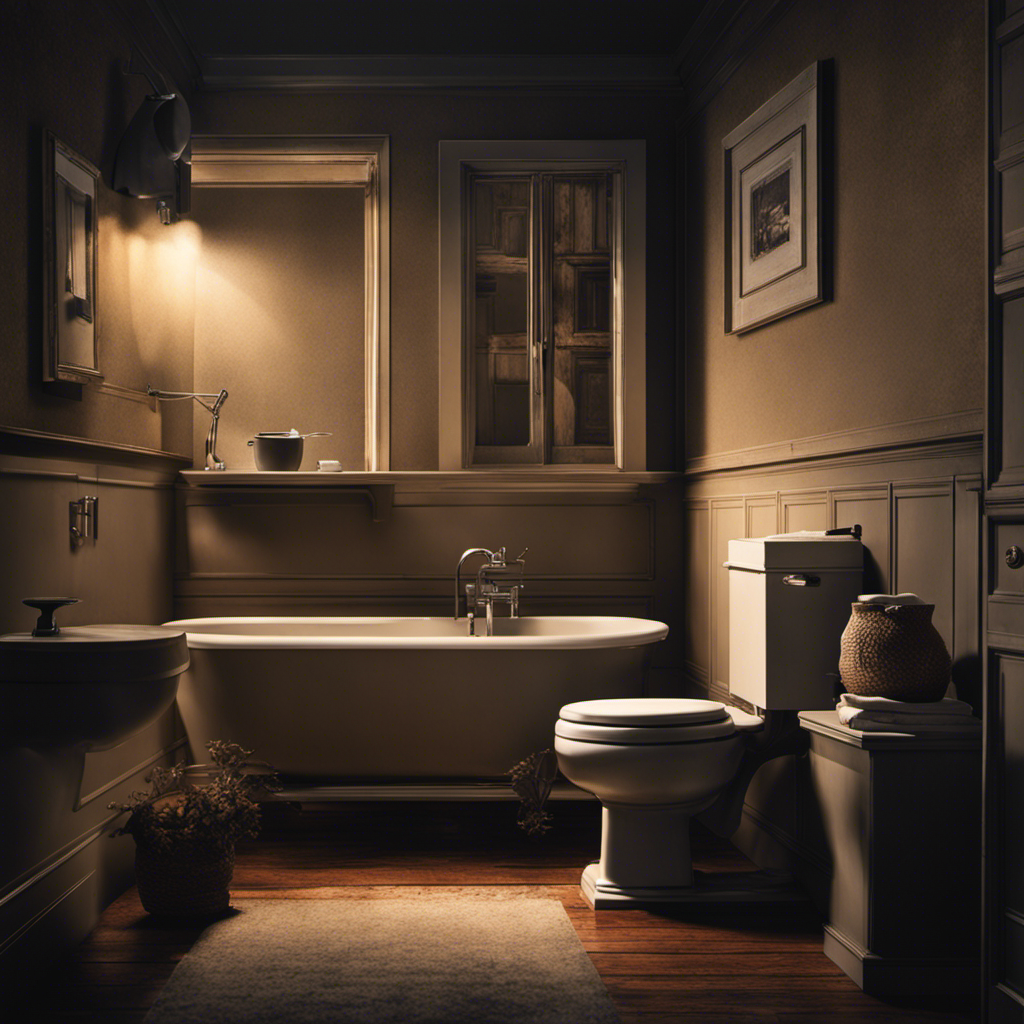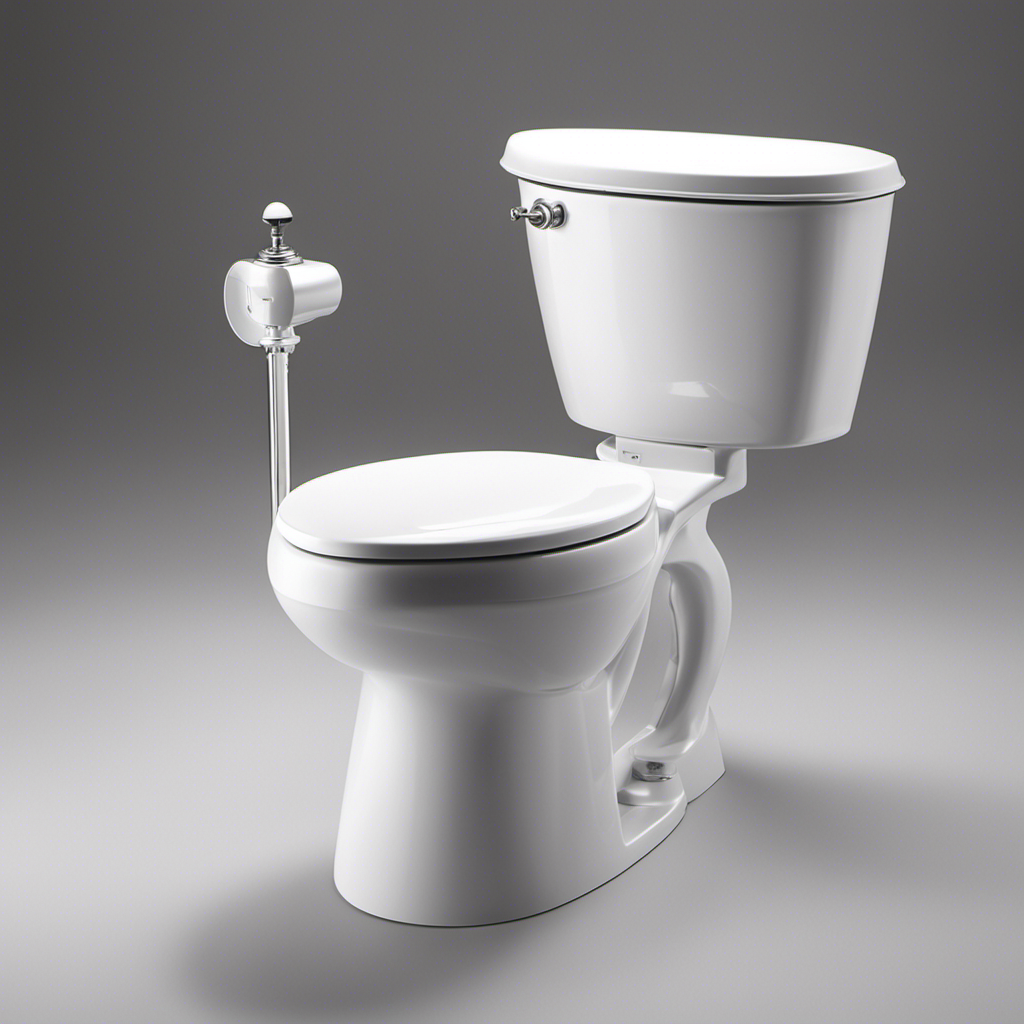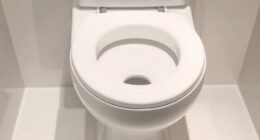As an experienced RVer, I know the struggle of navigating the ins and outs of an RV toilet. It’s ironic how something so essential can be so perplexing.
But fear not, fellow adventurers! In this article, I’ll share my knowledge and expertise on how to use an RV toilet like a pro. From understanding the system and proper waste disposal to dealing with odors and troubleshooting common issues, I’ve got you covered.
So let’s dive in and make your RV toilet experience a breeze!
Key Takeaways
- Understanding the components of an RV toilet system is crucial for maintenance and functionality.
- Proper water usage and flushing techniques can save water and prevent issues with the toilet.
- Proper waste disposal is essential for cleanliness and odor prevention.
- Regular cleaning and maintenance, including dealing with odors, are important for a pleasant RV experience.
Understanding the RV Toilet System
To understand how the RV toilet system works, you’ll need to know the different components involved.
The first key component is the RV toilet itself, which is specifically designed for use in recreational vehicles. These toilets are compact and efficient, making the most of the limited space available in an RV.
Another important component is the RV toilet chemicals. These chemicals are added to the toilet bowl to help break down waste and reduce odors. They come in various forms, such as liquids or drop-in packets.
Additionally, there are composting toilets available for RVs. These toilets use natural processes to break down waste, turning it into compost that can be safely disposed of.
Understanding these different components is crucial for maintaining a functional and sanitary RV toilet system.
Now, let’s move on to the next section about flushing and water usage.
Flushing and Water Usage
When it comes to flushing and water usage in toilets, there are several key points to consider.
One important aspect is saving water while flushing, which can be achieved by using water-saving devices or adjusting the water level in the tank.
Proper toilet water usage is also crucial, as excessive amounts of water can be wasteful and unnecessary.
Saving Water While Flushing
You can save water while flushing by using the half-flush option on your RV toilet. Water conservation is a crucial aspect of living an eco-friendly lifestyle, and adopting efficient flushing techniques is a great way to contribute to this cause.
Most modern RV toilets come equipped with a dual-flush system, allowing you to choose between a full flush and a half flush, depending on your needs. The half-flush option uses significantly less water, making it ideal for liquid waste. By utilizing this feature, you can conserve water without compromising on hygiene and functionality.
However, it’s important to remember that proper toilet water usage goes beyond just flushing. Let’s explore some additional tips to ensure responsible water usage in your RV toilet.
Proper Toilet Water Usage
Remember that responsible water usage in your RV toilet goes beyond just flushing. It includes being mindful of how much water you use when washing your hands and cleaning the toilet.
When it comes to toilet cleaning, it’s important to use water efficiently. Start by using a toilet brush and a small amount of water to scrub the bowl thoroughly. This will help remove any stains or residue without wasting excessive water.
Additionally, consider using a toilet deodorizer that doesn’t require water to freshen up the toilet between cleanings. This will help reduce water usage while still keeping your RV bathroom smelling fresh.
By being conscious of how much water you use for toilet cleaning and using alternative options like deodorizers, you can save water and promote sustainable RV living.
Now, let’s move on to efficient flushing techniques.
Efficient Flushing Techniques
To achieve efficient flushing in your RV, it’s best to use less water and opt for shorter flushes. This not only saves water but also helps in maintaining an eco-friendly lifestyle. When it comes to saving water, there are a few techniques that can make a significant difference. One option is to install a low-flow toilet that uses less water per flush. Additionally, using toilet paper that is specifically designed for RVs can help prevent clogs and reduce the amount of water needed for flushing. Another eco-friendly option is to use a composting toilet, which eliminates the need for water altogether. By implementing these techniques, you can enjoy the convenience of an RV toilet while also being mindful of the environment.
| Tips for Efficient Flushing |
|---|
| Install a low-flow toilet |
| Use RV-specific toilet paper |
| Consider a composting toilet |
| Limit flushes to shorter durations |
| Regularly maintain the toilet system |
Proper Waste Disposal
Proper waste disposal in an RV toilet is essential for maintaining cleanliness and preventing odors. As someone who has spent countless hours on the road in my RV, I have learned a few waste disposal techniques that are both effective and eco-friendly. Here are some tips to help you properly dispose of waste in your RV toilet:
-
Use biodegradable toilet paper: This type of toilet paper is specifically designed to break down quickly and easily, reducing the risk of clogs.
-
Avoid using chemical cleaners: Instead, opt for natural alternatives such as vinegar or baking soda to clean your RV toilet. These eco-friendly options are just as effective and won’t harm the environment.
-
Empty your RV toilet regularly: It’s important to empty the waste tank on a regular basis to prevent odors and maintain hygiene. Find a designated dumping station and follow proper disposal procedures.
Cleaning and Maintenance
Regular cleaning and maintenance of your RV is crucial for keeping it in top condition and ensuring a pleasant experience on the road. One important aspect of RV maintenance is taking care of the toilet.
To keep your toilet clean, it’s essential to regularly clean the toilet bowl and the toilet brush itself. After each use, rinse the brush thoroughly with hot water to remove any residue.
Additionally, it’s important to replace the toilet seal periodically. The toilet seal plays a vital role in preventing leaks and odors, so it’s essential to inspect it regularly and replace it if necessary. Check for any signs of wear or damage, such as cracks or leaks.
Dealing With Odors
If you’re experiencing unpleasant odors in your RV, try using baking soda to neutralize them. Baking soda is a natural and effective deodorizer that can help eliminate smells in your RV.
Here are some tips on how to use baking soda to get rid of those unwanted odors:
-
Place an open box of baking soda in your RV. Simply open a box of baking soda and leave it in a corner or on a shelf in your RV. The baking soda will absorb the odors and leave your RV smelling fresh.
-
Sprinkle baking soda on carpets and upholstery. If you notice any specific areas in your RV that have a strong odor, sprinkle some baking soda on the affected area. Let it sit for a few hours or overnight, then vacuum it up.
-
Use baking soda in your RV’s holding tank. Add a cup of baking soda to your RV’s holding tank to help control odors. The baking soda will neutralize any unpleasant smells and keep your tank fresh.
Troubleshooting Common Issues
When it comes to troubleshooting common issues with your RV toilet, there are a few key points to consider.
One common problem is a leaking toilet tank, which can lead to water damage and a constant need for refilling.
Another issue to watch out for is a clogged waste pipe, which can cause unpleasant backups and make it difficult to properly dispose of waste.
Lastly, a weak flush mechanism can result in inefficient flushing and the need for multiple attempts to clear the bowl.
Leaking Toilet Tank
To fix a leaking toilet tank in your RV, start by checking the connections and tightening any loose bolts. This is a common issue that can be easily resolved with a few simple steps. Here’s what you need to do:
- Check the water supply line connection to the toilet tank and make sure it is securely attached.
- Inspect the bolts that hold the tank to the bowl and tighten them if they are loose.
- Examine the gasket between the tank and the bowl for any signs of damage or wear. If necessary, replace the gasket to ensure a proper seal.
Clogged Waste Pipe
The first step in fixing a clogged waste pipe in your RV is to try using a plunger. This simple tool can often dislodge the obstruction and restore proper flow. However, if the plunger doesn’t work, there are other unclogging techniques you can try. One method is to use a plumbing snake or auger to break up the clog and remove it. Another option is to use a chemical drain cleaner, but be cautious as these can be harsh and may damage your pipes. To prevent clogs in the future, it’s important to be mindful of what you flush down the toilet. Avoid flushing anything other than toilet paper and waste. Additionally, regular maintenance, such as using an enzyme-based cleaner, can help keep your waste pipe clear and flowing smoothly.
| Unclogging Techniques | Preventing Clogs |
|---|---|
| Plunger | Be mindful of what you flush |
| Plumbing snake | Regular maintenance |
| Chemical drain cleaner | Use enzyme-based cleaner |
Weak Flush Mechanism
If your flush mechanism is weak, you may need to check the water pressure in your RV. A weak flush can be frustrating and make it difficult to properly clean your RV toilet. Here are some tips to improve flush power and fix weak flushes:
-
Check the water pressure: Low water pressure can result in a weak flush. Make sure the water pressure in your RV is at the appropriate level.
-
Clean the flush mechanism: Over time, mineral deposits and debris can build up in the flush mechanism, affecting its performance. Regularly clean the mechanism to ensure smooth operation.
-
Adjust the flush valve: The flush valve controls the water flow during flushing. Adjusting the valve can help increase the flush power and improve performance.
By following these tips, you can improve the flush power of your RV toilet and fix weak flushes.
Don’t let a weak flush get in the way of a clean and comfortable RV experience.
Conclusion
In conclusion, using an RV toilet may seem daunting at first, but with a little knowledge and experience, it becomes second nature. Remember to always flush and use water efficiently to conserve resources.
Proper waste disposal is crucial for maintaining a clean and functional system, so follow the guidelines provided. Regular cleaning and maintenance will ensure a hygienic and long-lasting toilet.
And finally, don’t let the occasional odor discourage you – there are solutions to tackle this issue. So, go forth and conquer the world of RV toilets with confidence and gusto! You’ll be a pro in no time, leaving your fellow campers in awe of your expertise.



